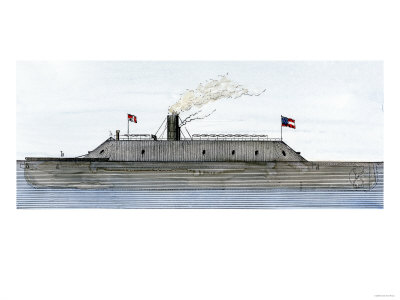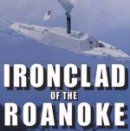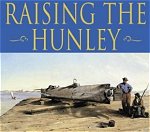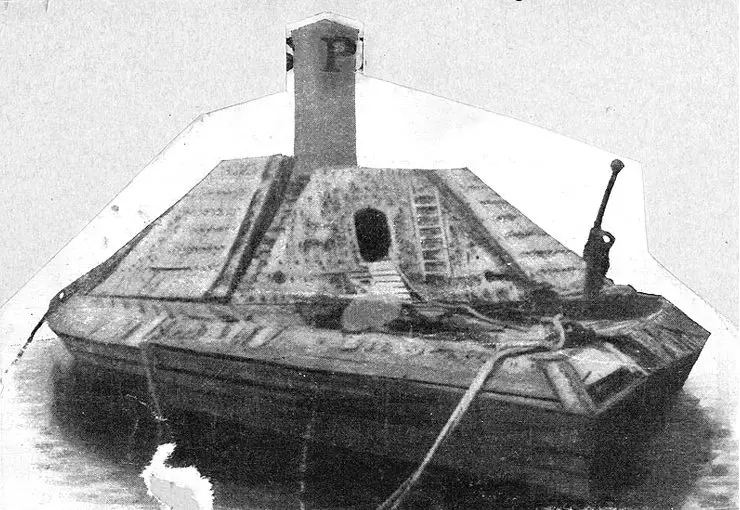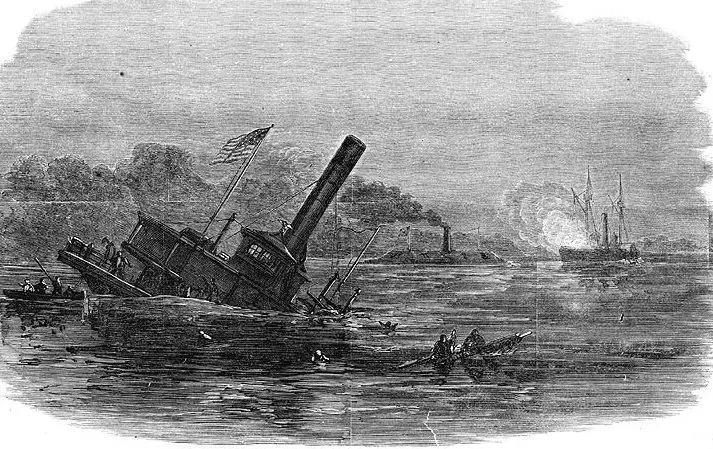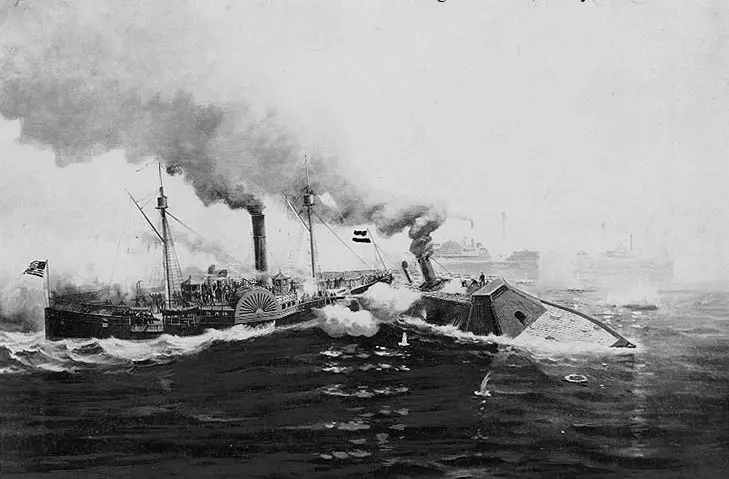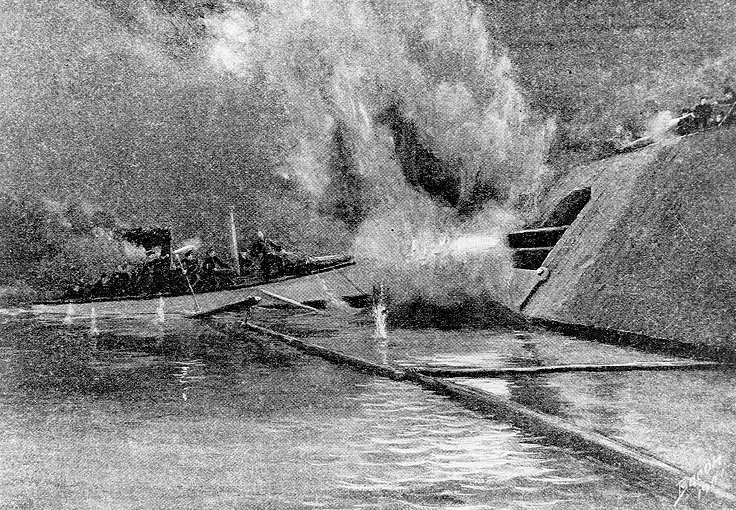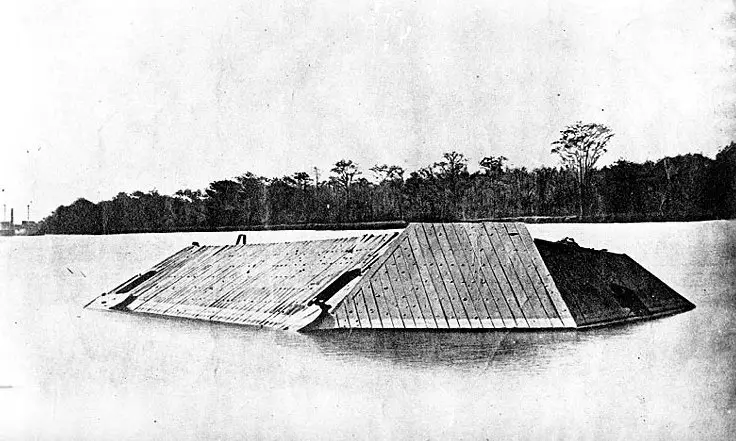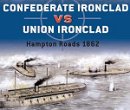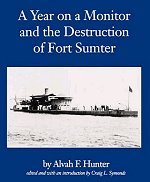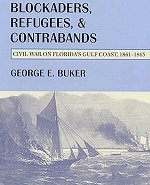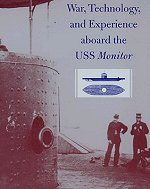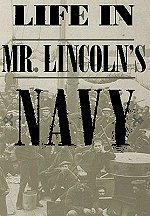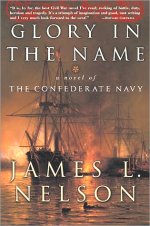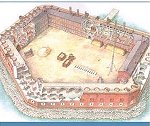CSS Albemarle (1864-1864)
CSS Albemarle , a relatively small ironclad ram, was built at Edwards Ferry, North Carolina. Commissioned in April 1864 under the command of Commander J.W. Cooke , CSN, she almost immediately went into action. On 19 April 1864, Albemarle attacked U.S. ships off Plymouth, N.C., sinking USS Southfield and driving away USS Miami and two other gunboats. With their waterborne communications severed, the Union forces were forced to surrender Plymouth to the Confederates.
Just over two weeks later, on 5 May, Albemarle , accompanied by the steamers Cotton Plant and Bombshell , steamed out into the North Carolina Sounds and attacked another U.S. Navy force, consisting of the "Double-ender" gunboats Sassacus , Wyalusing and Mattabesett , converted ferryboat Commodore Hull and small gunboat Ceres . Though Sassacus made a valiant attempt to sink the Albemarle by ramming, she was badly damaged in return. The Confederate ironclad was but lightly damaged in the engagement, which threatened the entire Union position on North Carolina's internal waters.
Desperate circumstances yield desperate responses, and on the night of 27-28 October 1864, Lieutenant William B. Cushing , USN, took the torpedo boat Picket Boat Number One upriver to Plymouth and bravely attacked Albemarle at her berth, sinking her with a spar torpedo. Following the Union recapture of the town, Albemarle was refloated. Taken to the Norfolk Navy Yard in April 1865, she remained there until sold in October 1867.
19th Century photographic reproduction of an artwork

CSS Albemarle at the Norfolk Navy Yard, Virginia, after salvage, circa 1865.
Two ladies are standing on her deck, near a section of displaced casemate armor.
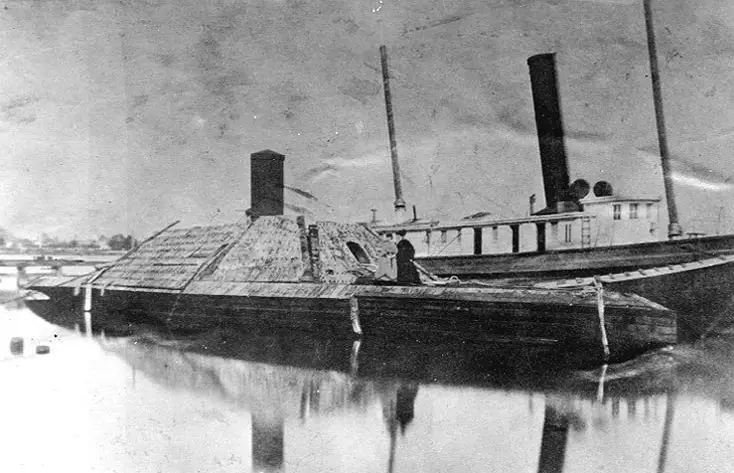

Duel on the Roanoke - The True Story of the CSS Albemarle
A 158-foot Confederate ironclad ship built in a cornfield 90 miles up North Carolina's Roanoke River, under the direction of an 18-year-old boy, and the deadly cat-and-mouse game between the two opposing captains.
Kindle Available

Wolf of the Deep: Raphael Semmes and the Notorious Confederate Raider CSS Alabama
In July 1862, the Confederate captain Raphael Semmes received orders to report to Liverpool, where he would take command of a secret new British-built steam warship.
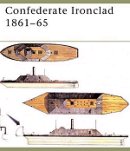
Confederate Ironclad 1861-65
Every aspect of Confederate ironclads is covered: design, construction, armor, armament, life on board, strategy, tactics, and actual combat actions.
